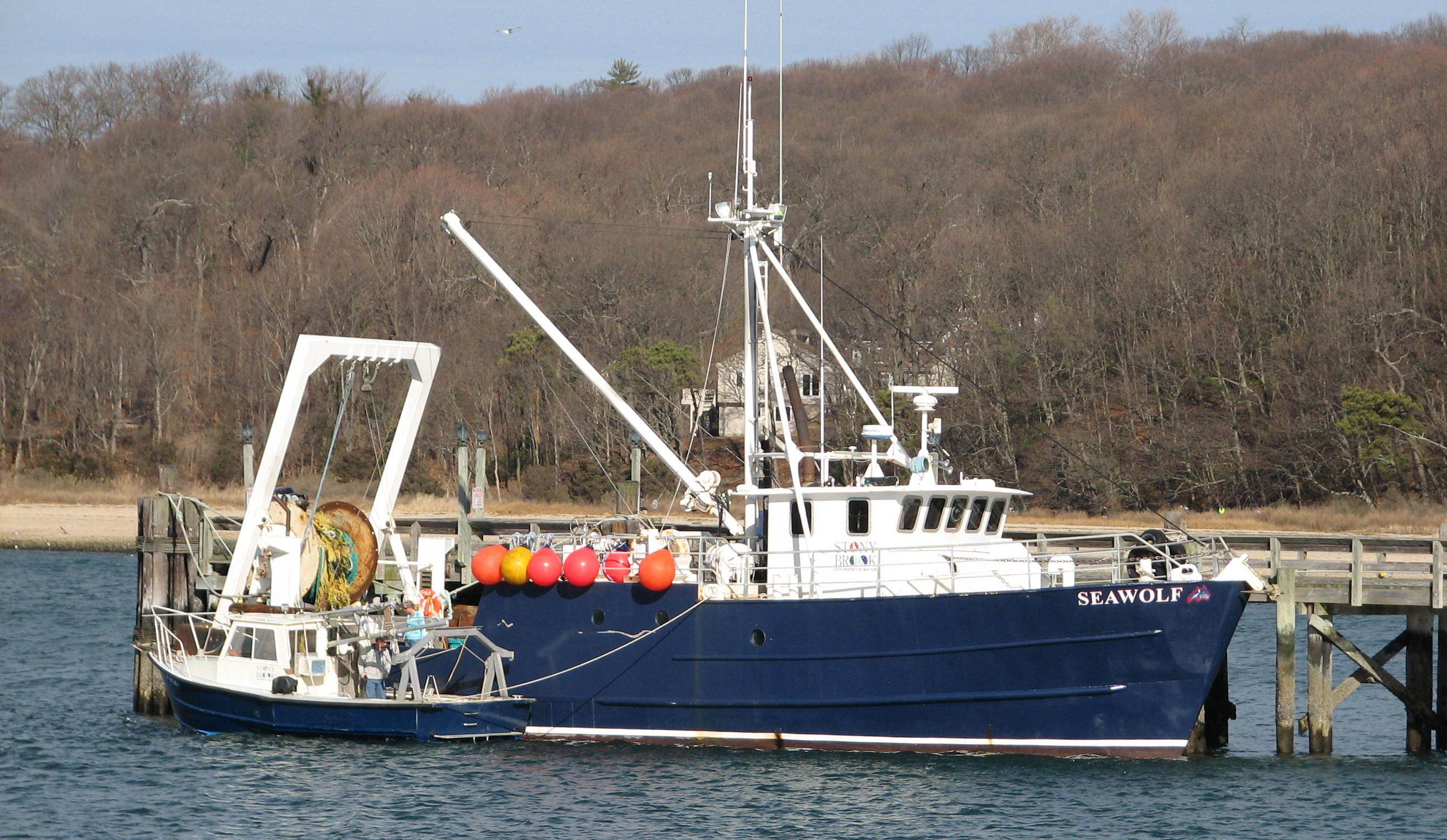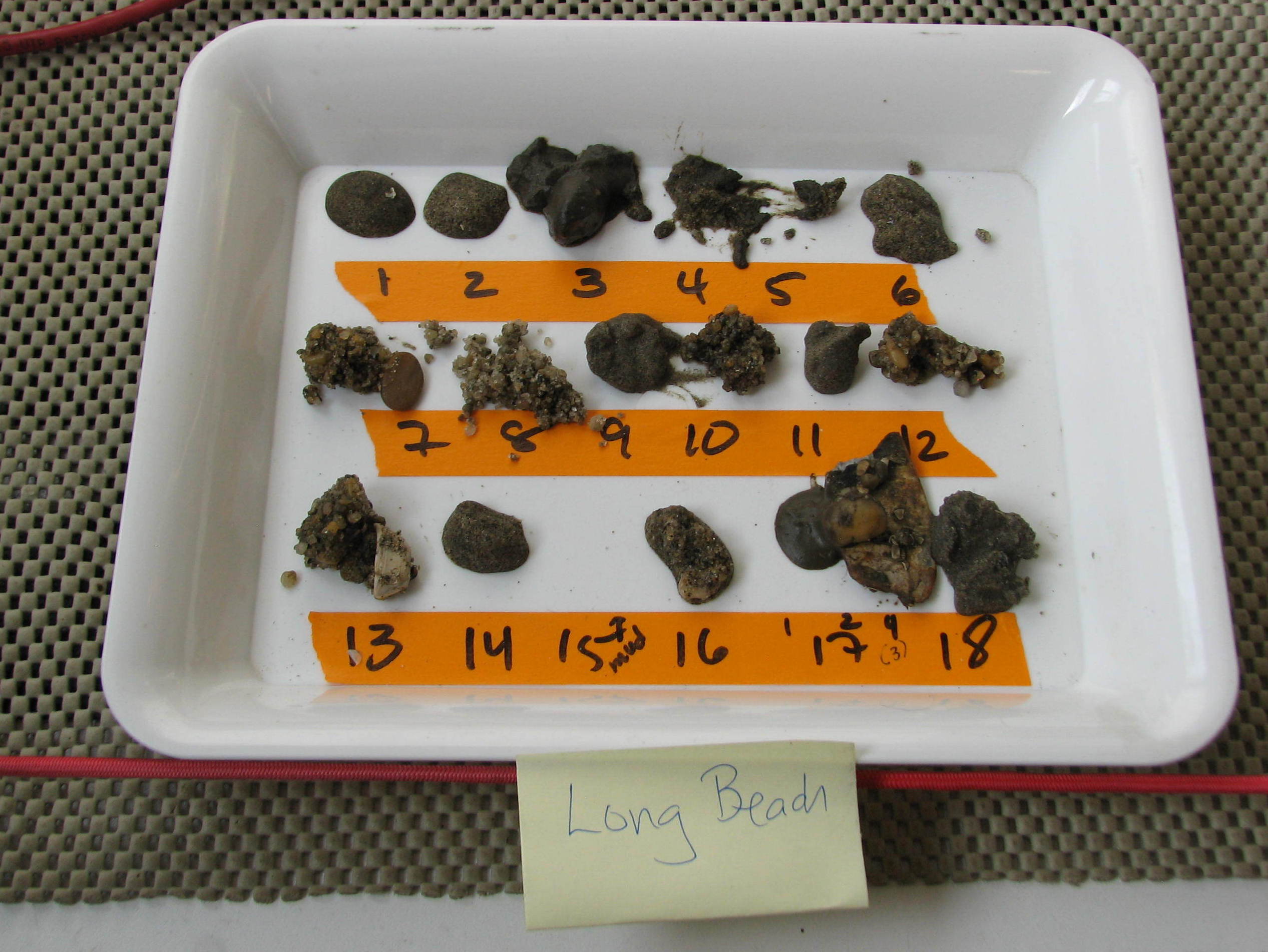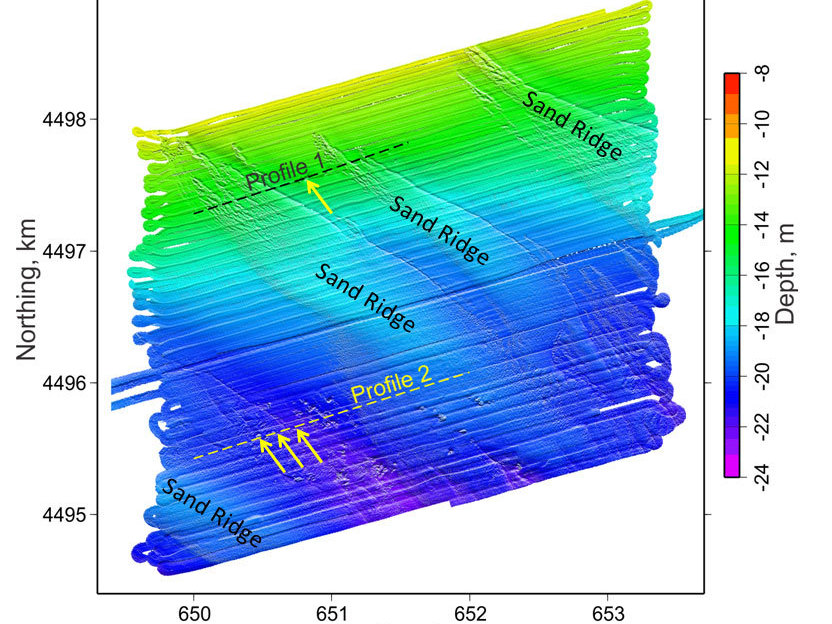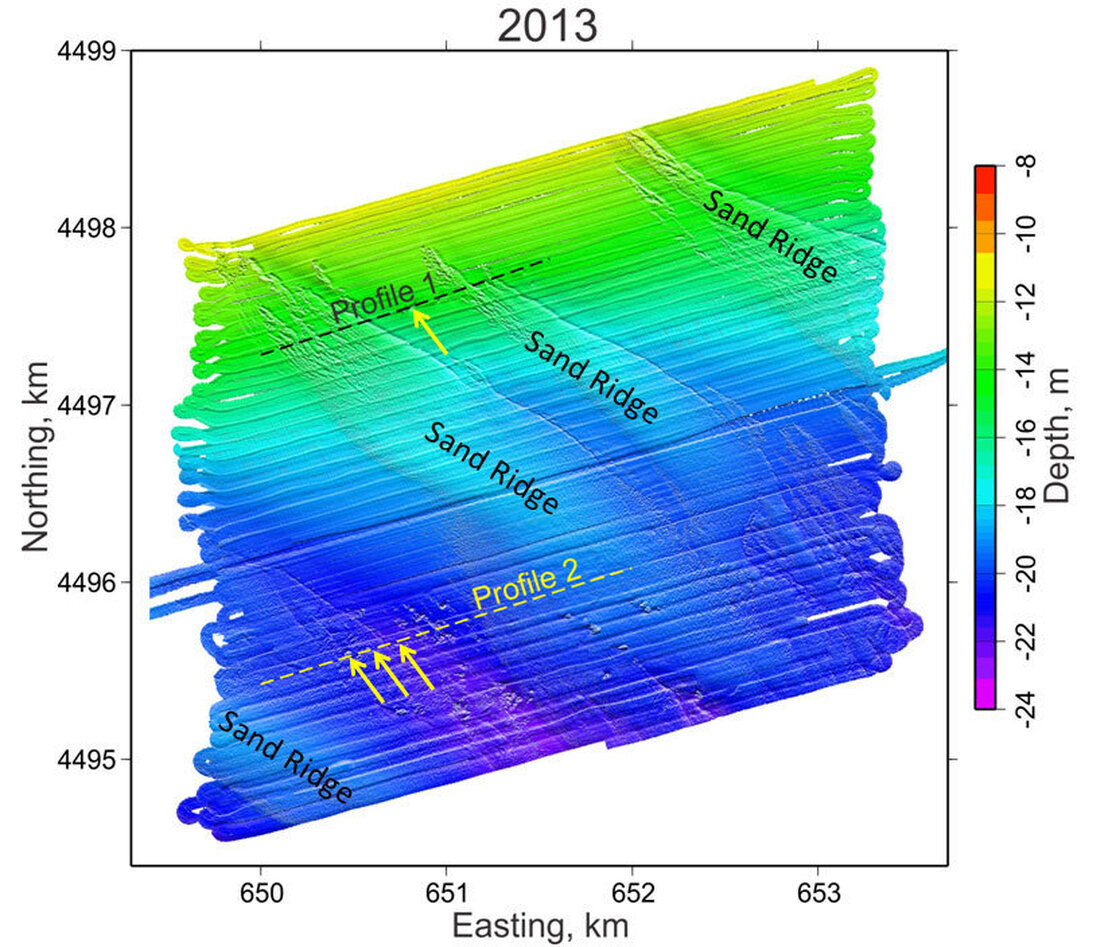-->

Researchers say the underwater slope that runs up against Long Island fared well during Hurricane Sandy. Above, two of the research vessels used for the undersea survey.
UT Austin Inst. for GeophysicsApparently, Long Island's shore face did remarkably well against the storm of the 21st century.
 Enlarge image i
Enlarge image i
Sediment samples from the seafloor near Long Island.
UT Austin Inst. for Geophysics 
Sediment samples from the seafloor near Long Island.
UT Austin Inst. for GeophysicsLast January, just months after the storm, NPR joined a crew of scientists on an ice-bedecked research boat to survey the damage to the shore. Shivering inside her car, Beth Christensen from Adelphi University showed me a map of what areas got flooded onshore. The map was dotted with hot spots. "This is a power plant," she said, pointing to the map. "This is a sewage treatment plant; here's another sewage treatment; another sewage treatment plant. Here's runoff coming in from the streets through all of those creeks.
"So all of that [material] combined ends up in those sediments," she explained — sediments now lying somewhere offshore.
Superstorm Sandy: Before, During And Beyond
Sand After Sandy: Scientists Map Seafloor For Sediment
Superstorm Sandy: Before, During And Beyond
After Sandy, Not All Sand Dunes Are Created Equal
"We're going to expect more storms in the future," Goff says, "so understanding the impact of these storms is really important."
The Texas group bills itself as a "rapid response" team — ocean scientists who swoop in after storms to study the damage to shorelines. After Hurricane Ike in Texas in 2008, Goff found that the storm surge had actually remodeled the shore face, moving huge amounts of sand out to sea.
Not so with Sandy. Now, Goff and his team have results.
 Enlarge image i
Enlarge image i
Underwater sand ridges, seen here in this radar data from earlier this year, served to "cushion" the blow of the storm, researchers say.
UT Austin Inst. for Geophysics 
Underwater sand ridges, seen here in this radar data from earlier this year, served to "cushion" the blow of the storm, researchers say.
UT Austin Inst. for Geophysics"I think of these ridges as kind of cushioning the blow," Goff says. "After the hurricane, they were still there. We didn't really see any massive, destructive erosion of the shore face."
Goff says many coastal areas along the eastern and southern U.S. have these underwater sand ridges just offshore. That's going to be important because the sea level is rising. Over time, higher sea levels will eat away at the coastline, undercutting anything that's built there. And during storms, higher sea levels mean it's more likely that wind and waves will push water higher up, onto land. But Goff says these sand ridges seem to slow down erosion and perhaps prevent flooding. That's hopeful news for coastal cities faced with sea level rise.
The news on pollution isn't so good. There were toxic chemicals and metals in the mud at the bottom of estuaries and bays along Long Island. Sandy sucked a lot of that back out into the ocean where it got spread around. The team will continue to track that.
The researchers reported their findings Friday at a San Francisco meeting of the American Geophysical Union.
13 Dec, 2013
-
Source: http://www.npr.org/2013/12/12/250468546/long-island-wins-ultimate-faceoff-against-hurricane-sandy?ft=1&f=1007
--
Manage subscription | Powered by rssforward.com

0 comments:
Post a Comment